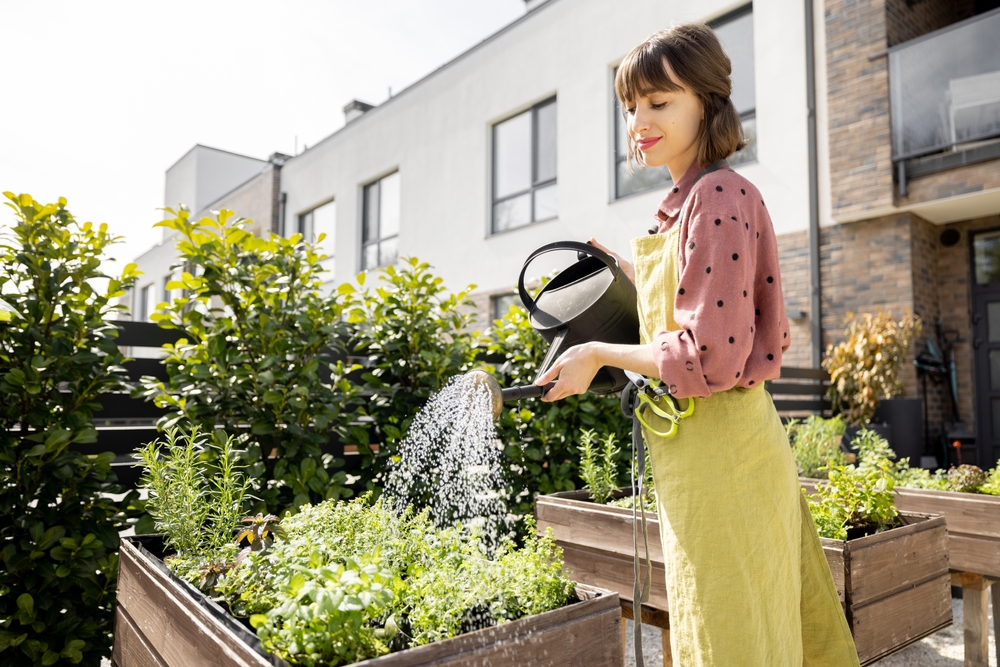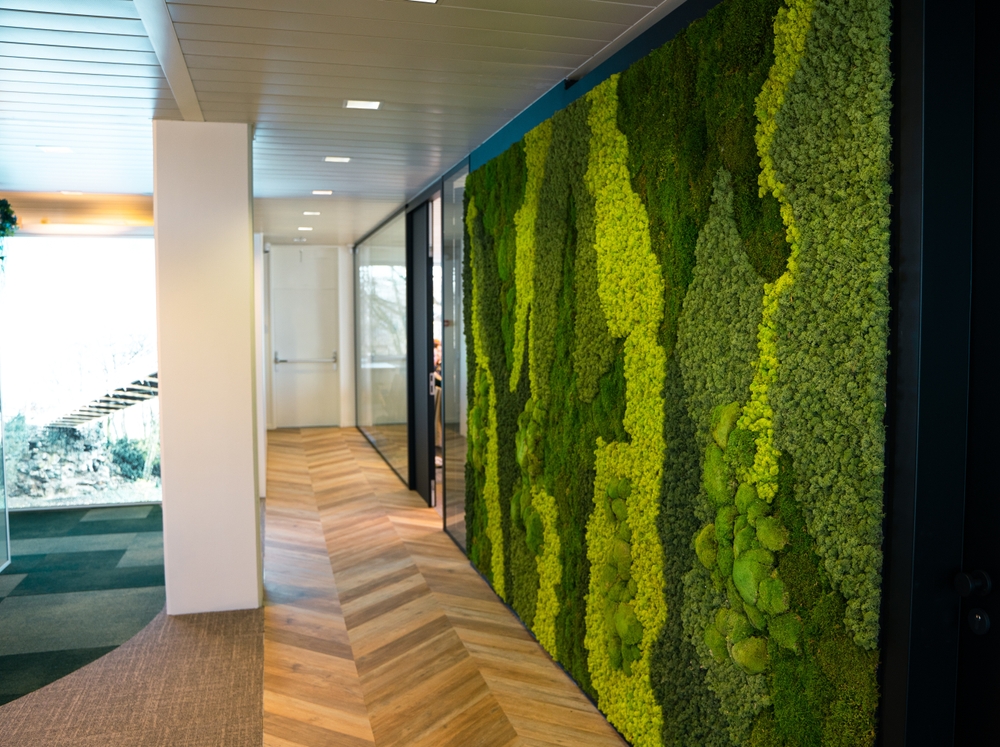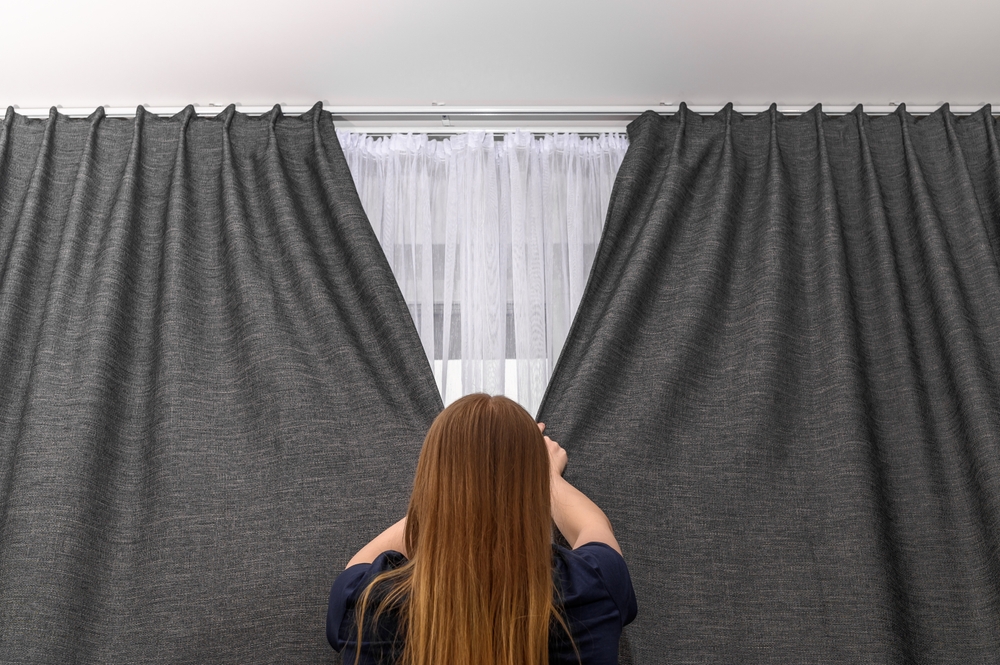Making your home more eco-friendly doesn’t have to be a daunting task. It’s about taking small, simple steps that add up to a big impact. Whether you’re just getting started or looking to take your green habits to the next level, there are plenty of easy changes you can make that benefit both the planet and your wallet. From switching to energy-efficient appliances to growing your own vegetables, each action you take helps create a healthier environment for you and your family. So, let’s dive into some straightforward and practical ways to make your home a more sustainable place to live.
Contents
- 1 Swap in Energy-Efficient Light Bulbs
- 2 Install a Smart Thermostat
- 3 Use Reusable Shopping Bags
- 4 Start a Compost Bin
- 5 Upgrade to Energy Star Appliances
- 6 Install Low-Flow Showerheads and Faucets
- 7 Use a Water-Saving Toilet
- 8 Seal and Insulate Your Home
- 9 Plant a Backyard Garden
- 10 Install Solar Panels
- 11 Use Reusable Water Bottles
- 12 Reduce Energy Use with Smart Plugs
- 13 Install a Rainwater Harvesting System
- 14 Choose Eco-Friendly Cleaning Products
- 15 Use Programmable Window Treatments
- 16 Install Energy-Efficient Windows
- 17 Use Eco-Friendly Paint
- 18 Recycle and Repurpose Furniture
- 19 Use Natural Lighting
- 20 Choose Sustainable Flooring
- 21 Grow Indoor Plants
- 22 Use Recycled or Upcycled Materials
- 23 Create a Green Roof or Wall
- 24 Choose Energy-Efficient Curtains
- 25 Opt for Sustainable Landscaping
- 26 Use a Clothesline
- 27 More From RetailShout
- 28 ALDI’s 20 Sneak Peek Finds for the Week of 12/11/24 – 12/17/24
- 29 12 Awesome Gifts From Target You’ll Want to Grab
Swap in Energy-Efficient Light Bulbs

Switching to energy-efficient light bulbs, such as LEDs, is a simple yet effective way to reduce your energy consumption. These bulbs use up to 80% less energy than traditional incandescent bulbs and last much longer. This small change can significantly lower your electricity bills over time. Moreover, LEDs produce less heat, reducing the need for air conditioning in warmer months. By making this switch, you’re contributing to the reduction of greenhouse gas emissions. It’s a low-cost and high-impact step toward a more eco-friendly home.
Install a Smart Thermostat

A smart thermostat can optimize your home’s heating and cooling systems, reducing energy waste. These devices learn your schedule and adjust temperatures accordingly, ensuring energy isn’t wasted when you’re not home. Over time, this can lead to substantial savings on your energy bills. Additionally, smart thermostats often come with apps that allow you to control your home’s temperature remotely. By maintaining an optimal temperature, you reduce the strain on your HVAC system, prolonging its lifespan and minimizing your carbon footprint.
Use Reusable Shopping Bags

Reducing single-use plastic is crucial for an eco-friendly lifestyle, and one of the easiest ways to start is by using reusable shopping bags. These bags can replace hundreds of plastic bags annually, which are often not recycled and contribute to environmental pollution. Reusable bags are more durable and can carry more items, reducing the need for multiple bags. Many are made from sustainable materials like organic cotton or recycled plastic. By keeping a few in your car or by the door, you can ensure you’re always prepared for grocery trips, minimizing your reliance on plastic.
Start a Compost Bin

Creating a compost bin is an excellent way to recycle organic waste and reduce your household garbage. Composting turns food scraps and yard waste into nutrient-rich soil that can be used for gardening. This process not only reduces the amount of waste sent to landfills but also decreases methane emissions, a potent greenhouse gas. A well-maintained compost bin can also improve soil health, promoting better plant growth and reducing the need for chemical fertilizers. Composting is a natural recycling process that benefits both your garden and the environment.
Upgrade to Energy Star Appliances

Investing in Energy Star-rated appliances can drastically reduce your home’s energy consumption. These appliances meet strict energy efficiency guidelines set by the EPA, using less electricity and water than standard models. Although they might have a higher upfront cost, the long-term savings on your utility bills make them a worthwhile investment. Energy Star appliances also reduce greenhouse gas emissions, as they require less power to operate. By choosing these products, you’re contributing to a cleaner environment while enjoying modern conveniences.
Install Low-Flow Showerheads and Faucets

Water conservation is a key component of an eco-friendly home, and installing low-flow showerheads and faucets is an easy step to take. These devices reduce water flow without sacrificing water pressure, helping you save water and lower your utility bills. The EPA estimates that low-flow fixtures can save the average family up to 2,700 gallons of water per year. This reduction not only conserves water but also reduces the energy required to heat the water, further decreasing your environmental impact. It’s a simple upgrade with significant benefits.
Use a Water-Saving Toilet

Replacing your old toilet with a water-saving model can greatly reduce your household’s water usage. Modern low-flow toilets use as little as 1.28 gallons per flush, compared to older models that can use up to 7 gallons. This change can save thousands of gallons of water per year. Dual-flush toilets offer even more flexibility, allowing you to choose a lower or higher flush volume depending on the need. By installing a water-saving toilet, you’re contributing to water conservation efforts and reducing your environmental footprint.
Seal and Insulate Your Home

Proper insulation and sealing gaps in your home can significantly improve energy efficiency. Poor insulation and air leaks can cause your heating and cooling systems to work harder, leading to higher energy bills and unnecessary energy consumption. By sealing windows, doors, and other openings, you prevent heat loss in the winter and keep your home cooler in the summer. Insulating your attic, walls, and floors further enhances energy efficiency. These measures not only make your home more comfortable but also reduce your carbon footprint.
Plant a Backyard Garden

Growing your own fruits, vegetables, and herbs is a rewarding way to live more sustainably. A backyard garden reduces your reliance on store-bought produce, which often requires significant resources to grow, package, and transport. Gardening also improves soil health and provides a habitat for local wildlife. Additionally, it encourages you to compost organic waste, further reducing your household’s environmental impact. A garden can also lower your grocery bills and provide fresh, organic produce right at your doorstep.
Install Solar Panels

Solar panels are one of the most effective ways to reduce your reliance on fossil fuels and lower your electricity bills. By harnessing the power of the sun, solar panels generate clean, renewable energy that can power your home. While the initial investment can be high, many government incentives and rebates are available to offset the cost. Over time, the energy savings can make solar panels a cost-effective option. Solar energy also reduces your carbon footprint, contributing to a cleaner and more sustainable planet.
Use Reusable Water Bottles

Switching to reusable water bottles is a simple way to reduce plastic waste and stay hydrated. Single-use plastic bottles contribute to pollution and are often not recycled, ending up in landfills or oceans. Reusable bottles, especially those made from stainless steel or BPA-free plastic, are durable and can be used for years. They also help you save money by reducing the need to purchase bottled water. By carrying a reusable water bottle, you minimize your environmental impact and promote a culture of sustainability.
Reduce Energy Use with Smart Plugs

Smart plugs allow you to control your appliances remotely and monitor their energy usage. By using smart plugs, you can turn off devices that aren’t in use, reducing phantom energy consumption. Many smart plugs can be programmed to turn off automatically during certain hours, further conserving energy. This technology not only helps you save on electricity but also provides insights into which devices consume the most power. Smart plugs are an affordable and easy way to enhance your home’s energy efficiency.
Install a Rainwater Harvesting System

Rainwater harvesting systems collect and store rainwater for use in your garden or home. This practice reduces your reliance on municipal water supplies and lowers your water bills. Rainwater is naturally soft and free of chemicals, making it ideal for irrigation and other non-potable uses. Installing a rain barrel or a more complex system can provide a sustainable water source throughout the year. By utilizing rainwater, you reduce the demand on local water resources and contribute to water conservation efforts.
Choose Eco-Friendly Cleaning Products

Traditional cleaning products often contain harsh chemicals that can be harmful to both the environment and your health. Switching to eco-friendly cleaning products made from natural ingredients can reduce your exposure to toxins and decrease environmental pollution. Many eco-friendly products are biodegradable and packaged in recyclable materials, further minimizing waste. You can also make your own cleaning solutions using ingredients like vinegar, baking soda, and lemon. By choosing greener alternatives, you create a healthier home environment and reduce your ecological footprint.
Use Programmable Window Treatments

Programmable window treatments, such as smart blinds or shades, can help regulate the temperature in your home by controlling the amount of sunlight that enters. These devices can be scheduled to open or close at specific times of the day, reducing the need for heating and cooling. During the summer, closing blinds during the hottest part of the day can keep your home cooler, while in the winter, opening them during the day can maximize natural heating from the sun. This automation can lead to energy savings and a more comfortable living environment.
Install Energy-Efficient Windows

Energy-efficient windows can greatly reduce the amount of heat lost during the winter and keep your home cooler in the summer. These windows are designed with multiple panes of glass and insulating gas layers that minimize heat transfer. Replacing old, drafty windows with energy-efficient ones can lower your energy bills and make your home more comfortable. Additionally, many energy-efficient windows are made from sustainable materials, further reducing your home’s environmental impact. This upgrade is an investment that pays off in both comfort and savings.
Use Eco-Friendly Paint

When renovating or decorating your home, consider using eco-friendly paint that contains low or zero volatile organic compounds (VOCs). Traditional paints can release harmful chemicals into the air, contributing to indoor air pollution and health issues. Eco-friendly paints are made with natural ingredients and have little to no odor, making them safer for both your family and the environment. They also provide excellent coverage and durability, ensuring a long-lasting finish. By choosing green paint options, you’re creating a healthier living space and reducing your ecological footprint.
Recycle and Repurpose Furniture

Instead of buying new furniture, consider recycling or repurposing existing pieces to reduce waste. Many items can be given a new life with a fresh coat of paint, new upholstery, or by being used in a different way. Thrift stores, garage sales, and online marketplaces are great places to find second-hand furniture that can be refurbished. By repurposing furniture, you not only save money but also reduce the demand for new resources. This approach supports a circular economy and helps minimize the environmental impact of manufacturing.
Use Natural Lighting

Maximizing natural light in your home can reduce the need for artificial lighting, saving energy and creating a more pleasant living environment. Open curtains and blinds during the day to let in as much sunlight as possible. You can also strategically place mirrors to reflect light into darker areas of your home. Skylights and light tubes are another way to increase natural lighting, especially in rooms that don’t receive much sunlight. By relying more on natural light, you reduce your energy consumption and create a brighter, more inviting space.
Choose Sustainable Flooring

When it comes to flooring, opt for materials that are sustainable, such as bamboo, cork, or reclaimed wood. These materials are not only eco-friendly but also durable and aesthetically pleasing. Bamboo, for example, is a fast-growing plant that regenerates quickly, making it a renewable resource. Cork is harvested from the bark of cork oak trees, which can be done without harming the tree. Reclaimed wood repurposes old materials, reducing the need for new logging. Sustainable flooring is a stylish and responsible choice that contributes to a greener home.
Grow Indoor Plants

Indoor plants not only beautify your home but also improve indoor air quality by filtering out toxins and releasing oxygen. Plants like snake plants, spider plants, and peace lilies are particularly effective at purifying the air. They also add moisture to the air, which can be beneficial in dry environments. Additionally, caring for plants can have a calming effect, reducing stress and enhancing your overall well-being. By incorporating indoor plants into your home, you’re creating a healthier living space that supports both your physical and mental health.
Use Recycled or Upcycled Materials

Incorporating recycled or upcycled materials into your home decor is a creative way to reduce waste and promote sustainability. Items like reclaimed wood, recycled glass, and upcycled textiles can be used to create unique and eco-friendly furnishings. These materials often have a lower environmental impact compared to new products, as they require fewer resources to produce. Upcycling also encourages innovation and personalization, allowing you to create one-of-a-kind pieces for your home. By choosing recycled or upcycled materials, you’re contributing to a more sustainable and circular economy.
Create a Green Roof or Wall

Green roofs and walls are innovative ways to enhance your home’s sustainability. A green roof is covered with vegetation, which helps insulate your home, reduce stormwater runoff, and improve air quality. Green walls, or living walls, are vertical gardens that can be installed on the exterior or interior of your home. These features not only add aesthetic value but also provide environmental benefits, such as reducing the urban heat island effect. Green roofs and walls are a modern approach to eco-friendly living that can transform your home’s appearance and performance.
Choose Energy-Efficient Curtains

Energy-efficient curtains, also known as thermal curtains, are designed to reduce heat loss in the winter and keep your home cool in the summer. These curtains are made from heavy, insulating materials that help maintain a stable indoor temperature. By using energy-efficient curtains, you can reduce the need for heating and cooling, leading to lower energy bills. They also provide additional benefits, such as blocking out light and noise, making your home more comfortable. This simple change can make a big difference in your home’s energy efficiency.
Opt for Sustainable Landscaping

Sustainable landscaping involves choosing plants and materials that require minimal water, pesticides, and fertilizers. Native plants are a great choice because they are adapted to the local climate and require less maintenance. Additionally, using mulch, compost, and rain barrels can help conserve water and improve soil health. Sustainable landscaping not only reduces your environmental impact but also creates a beautiful and low-maintenance garden. By designing your outdoor space with sustainability in mind, you’re contributing to a healthier ecosystem.
Use a Clothesline

Drying your clothes on a clothesline instead of using a dryer is an easy way to save energy and reduce your carbon footprint. Clotheslines require no electricity and allow your clothes to dry naturally in the sun and wind. This method is gentler on fabrics, helping them last longer. Additionally, sunlight naturally disinfects and freshens clothes, reducing the need for chemical detergents. By using a clothesline, you’re reducing your energy consumption and embracing a simpler, more sustainable lifestyle.
This article originally appeared on RetailShout.
More From RetailShout
This Week’s 13 Hottest Finds at Costco (12/08/2024)

Costco never fails to surprise shoppers with incredible finds, and this week is no exception. From seasonal treats to must-have gadgets, the aisles are packed with items that offer value and quality. Read More.
ALDI’s 20 Sneak Peek Finds for the Week of 12/11/24 – 12/17/24

The holiday season just got even better with ALDI’s latest Sneak Peek finds! Whether you’re sprucing up your home, searching for thoughtful gifts, or snagging fun treats for the family, this week’s lineup has something for everyone. Read More.
12 Awesome Gifts From Target You’ll Want to Grab

Target is one of the best places to find unique gifts that everyone will love, whether you’re shopping for a friend, family member, or treating yourself. From cozy home goods to cool gadgets, Target has something for every occasion. Read More.






